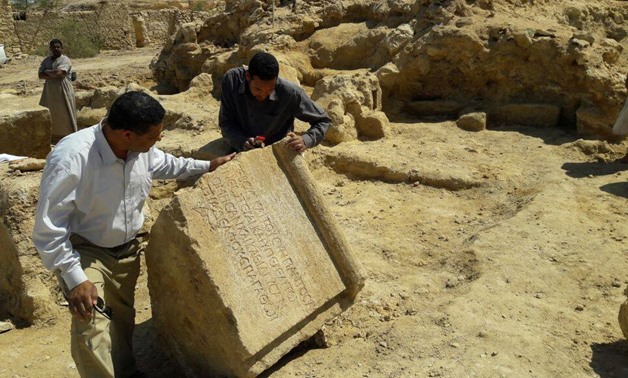
Remains of a temple that dates back to the Greco-Roman period during the era of Roman Emperor Antoninus Pius unearthed in Siwa Oasis - Ministry of Antiquities' official Facebook page
CAIRO – 11 May 2018: The Ministry of Antiquities announced Thursday that it had managed to unveil remains of a temple that dates back to the Greco-Roman period during the era of Roman Emperor Antoninus Pius.
The temple apparently belonged to Roman Emperor Antoninus Pius, who reigned from 138 AD to 161 AD and ruled the Al-Hag Ali village in Siwa Oasis, situated 350m away of Gabal Al-Marwa (Mountain of the Dead).

Head of the Ancient Egyptian Antiquities Sector, Ayman Ashmawy, explained that the recent discovery is archeological evidence of the history of Siwa Oasis during the Greco-Roman era in Egypt.
“The temple consists of a foundation of a limestone, which is being measured 40m from north to south and 8.5m from east to west,” Ashmawy added.

He continued, “Its entrance is located on the northern side, lined with two small rooms leading to a 25-meter-long front hall and the holy of the Holies. The temple is also surrounded by an outer wall 71m x 56m in size.”
The temple’s limestone has been transferred to the Siwa Museum for preservation works, according to the Ministry of Antiquities.

“The measure of the block is about 5m x 1m. It was found broken in three parts and is most probably part of the upper lintel that is located at the entrance to the temple,” he concluded.




Comments
Leave a Comment